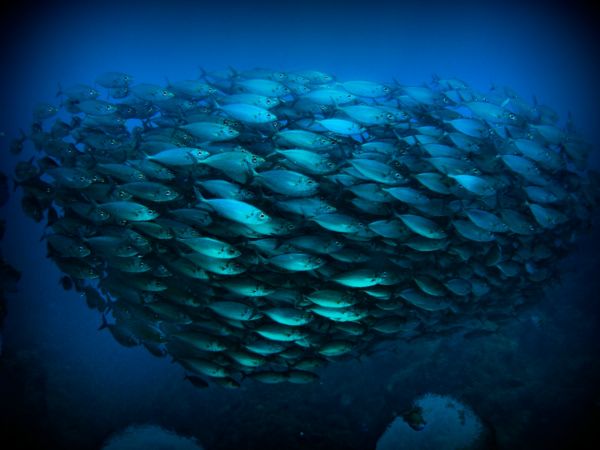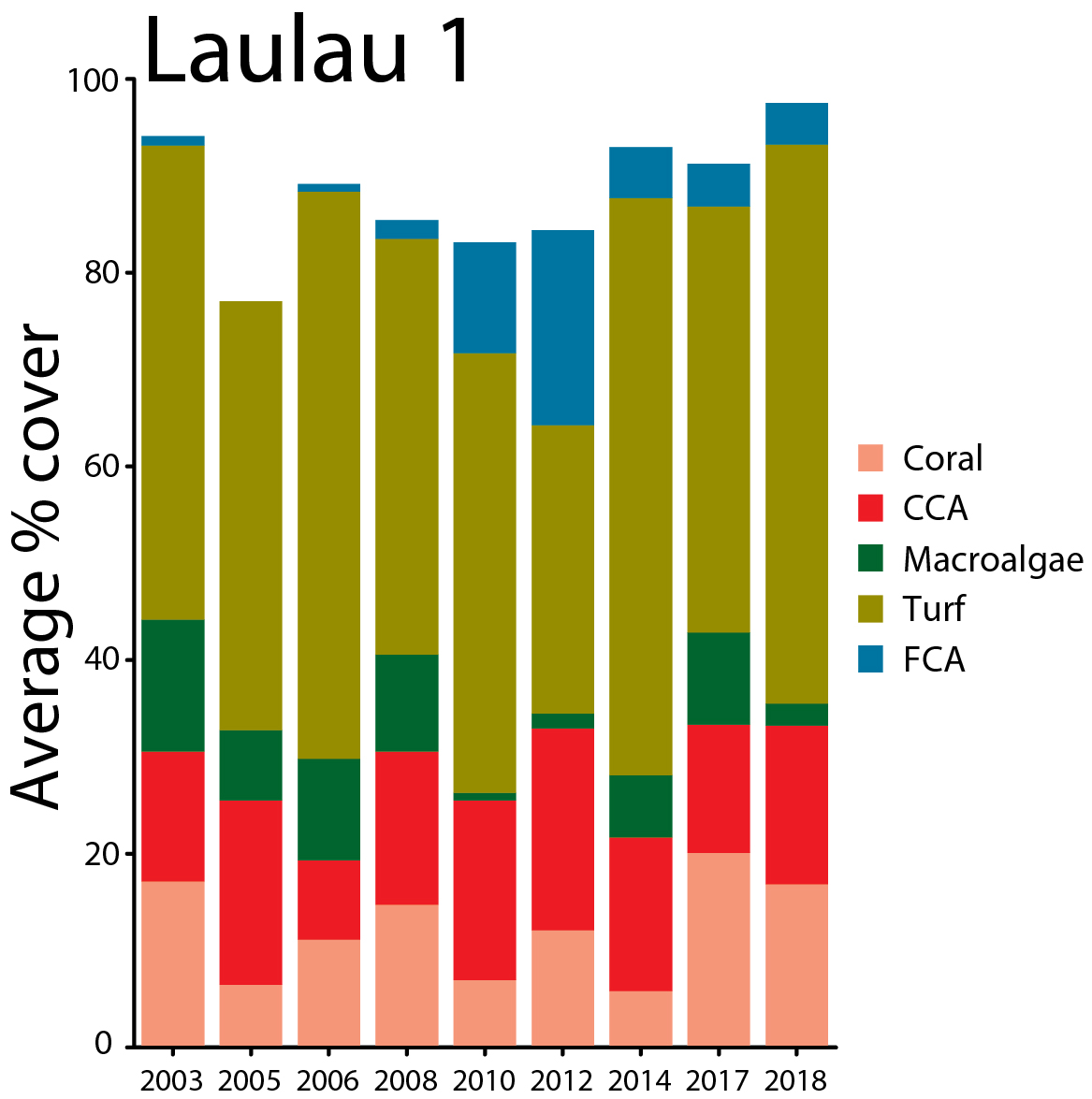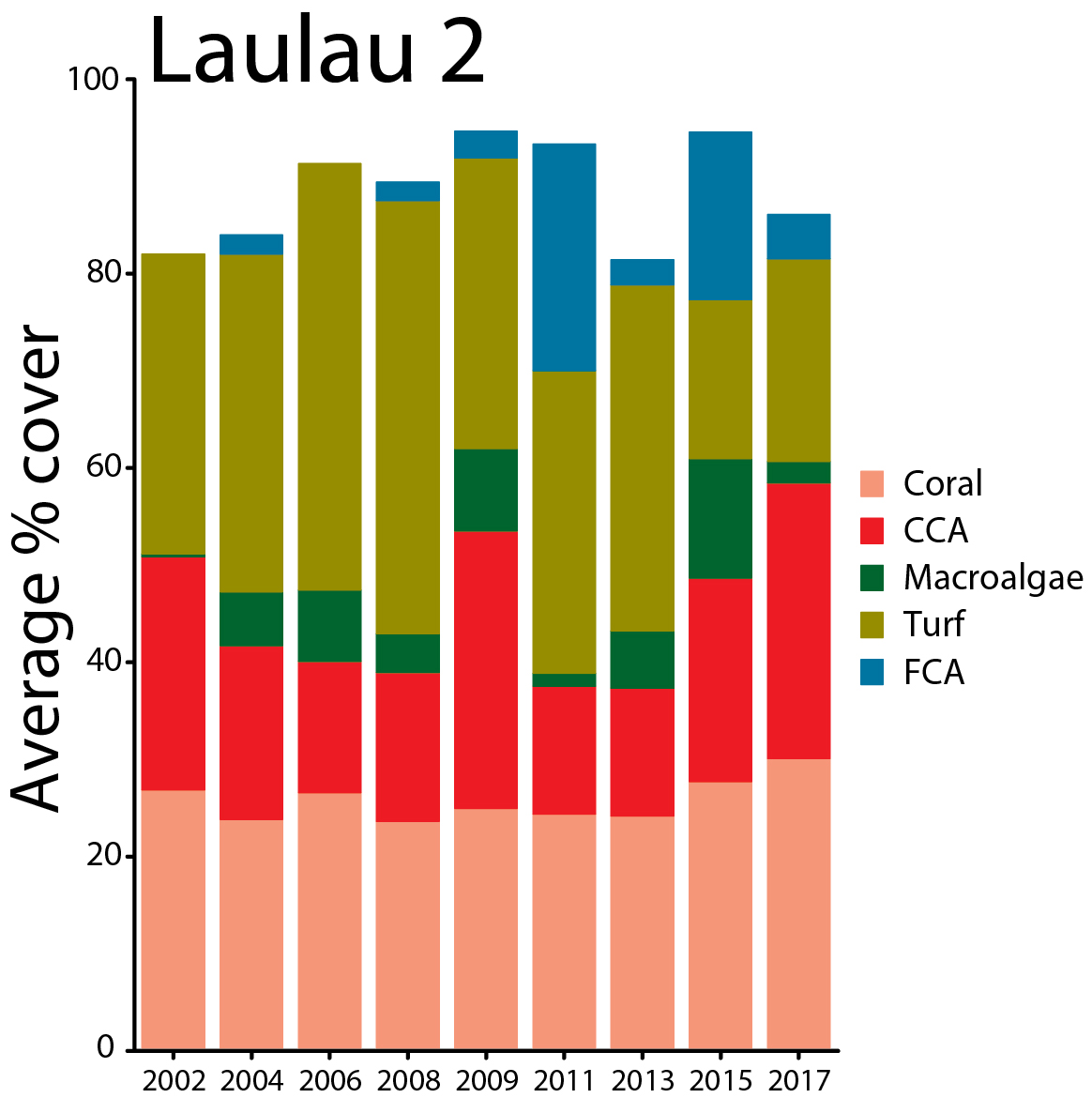Laolao Bay Monitoring

A key feature of Laolao Bay is the associated coral reef, which is a fringing reef that extends all around the bay. MMT has three long-term monitoring sites located in the Bay, each associated with different subwatersheds. Long-term monitoring of the reefs of the CNMI started with a large sedimentation event in Laolao, drawing attention from local scientists and resource managers that long-term ecological monitoring of the reefs should be a priority.
The reefs of Laolao Bay are quite diverse. Reefs found on the eastern portion of the bay are exemplary of those found in similar habitats – wave-sheltered waters with freshwater input from the aquifer. These types of reefs are dominated by the corals Porites rus, carpet coral (Goniopora sp.), and massive faviids such as Goniastrea retiformis and Diploastrea heliopora. The central and western portions of Laolao Bay have less influence from subterranean sources of water and thus have a different coral community. This community is dominated by encrusting and branching corals such as Montipora, Acropora, Astreopora and Pocillopora.
Historically, Laolao Bay has had relatively high coral cover, nearing 40%. However, a combination of sedimentation/nutrient loading, cyclonic storm activity and an outbreak of corallivous starfish Acanthaster planci have severely impacted the coral community, primarily at the Laolao Bay #1 monitoring site. The amount of turf algae, fleshy coralline algae (Peysonellia sp.) and macroalgae have cumulatively seen an increase in coverage. Possible factors include:
- Continual nutrient input from upland sources could be providing macroalgae the proper conditions to flourish.
- Lack of herbivory from fish and other grazers such as sea urchins.
Laolao Bay has recently seen a batch of new projects to address some of these issues. Road and drainage improvements have been funded by through the American Reinvestment and Recovery Act (ARRA) via the National Oceanic and Atmospheric Administration (NOAA); a social-marketing campaign to address littering has been launched by DEQ, CRM and SeaWeb called OurLaolao; NOAA-AOML has also installed a CREWS-ICON Station that conducts real-time oceanographic and weather monitoring.
All of these projects are supported in large part by data provided by MMT.
Benthic Cover




